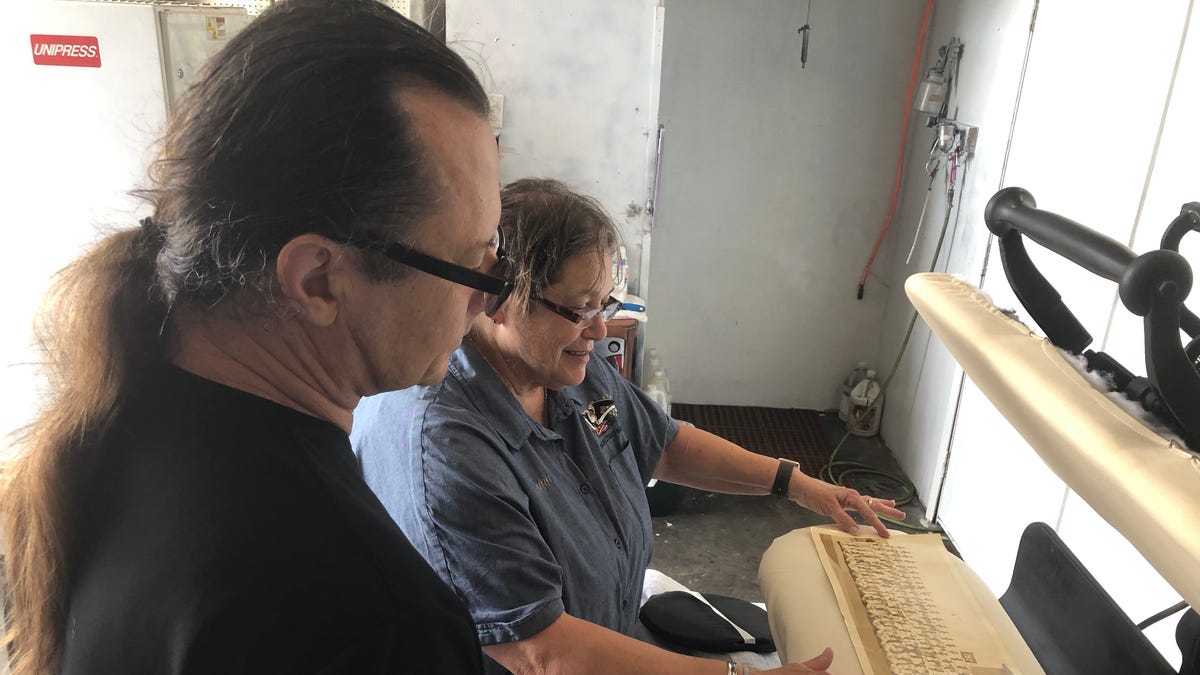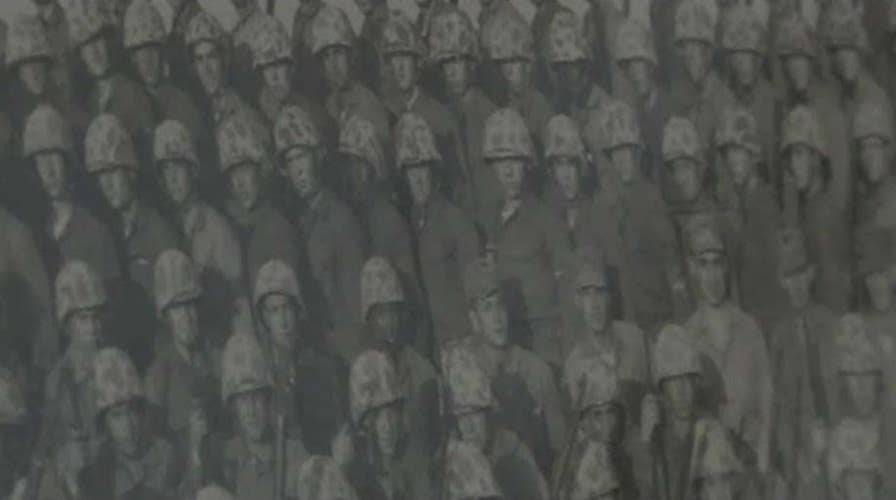Louisiana business owner helps military museum restore war photos
A Louisiana business owner lends a hand to a local military museum in restoring the history of American soldiers who served in World War I and World War II.
HOUMA, La. - Matthew Porche has learned the ins and outs of the dry cleaning business for most of his life.
Restoring clothing is what the third-generation owner of Uneeda Dry Cleaners in Houma, La. was destined to do. Those skills have proven to be handy elsewhere as he lends a hand to a southern Louisiana military museum in restoring the history of American soldiers who served in World War I and World War II.
The idea came to Porche after seeing a volunteer at the Regional Military Museum trying to unroll a fragile World War-era photo with a small steamer. Porche, a volunteer member on the museum’s board of directors, said a single photo took about a half hour on average.
“It was agonizingly painfully slow, it seemed like,” Porche recalled.
Soon after, he remembered seeing a similar process, on a much larger scale, where steam was used to unravel old photos at the Smithsonian National Museum of American History in Washington D.C. Porche thought he could do the same with the dozens of early to mid 20th-century photos of American soldiers that were donated to the Regional Military Museum.
He had no doubt that his steam press, sitting just eight minutes away in his dry cleaning business, could get the job done much quicker.

Matthew Porche (right) talks to his employees at his family-owned dry cleaners as they finish scanning customers' clothing. (Fox News/ Charles Watson)
“In the back of my mind, I thought of these old machines that my grandfather purchased back in the 50s. I really knew in my heart they would work,” Porche said. “We came here, did a test run and it worked perfectly.”
REVOLUTIONARY WAR BRITISH SHIPWRECK FROM THE SIEGE OF YORKTOWN DISCOVERED
Since April, the museum’s mostly volunteer staff has unrolled “dozens” of brittle photos through a carefully orchestrated process.
On a warm day in June, two of the museum’s volunteers worked in tandem as they carefully tried to unravel a rare photo taken in 1943 of the 383rd Port Battalion of a group of black soldiers who were believed to have loaded either ammunition ships or trains during WWII. As one pressed on a foot peddle, steam was released onto the photo, allowing the other volunteer to slowly roll it flat onto the steam press’ ironing board-like surface. If the picture got too hot or moist, another peddle was pressed that allowed the device to evacuate the steam that had been released.

Suzanne Peterson (right) and Richard Cosse carefully roll out a photo taken in 1943 of soldiers who served in World War II. (Fox News/ Charles Watson)
“The big thing is not saturating the photo,” said Suzanne Peterson, as she carefully smoothed out the photo without damaging it. “With the older chemicals, it can smear the picture and you would lose a part of history.”
Carleton Casey Jr., who curates Regional Military Museum’s collections of military tanks, aircrafts and uniforms that are on display, said it would be “almost impossible” for the museum to have restored the old war photos without the steam press.

A few of the Regional Military Museum's restored photos from WWI and WWII on display among other historical memorabilia. The more hopes to have dozens more of the restored war photos on display by the end of the year. (Fox News/ Charles Watson)
“We would be able to unravel them to a point, then they would just begin to deteriorate,” Casey Jr. said. “They’re extremely fragile to the point where just the oil on your skin could affect the actual exposure of the picture itself.”
Now with the process sped up, the museum is hoping to build upon its World War I and World War II displays with the addition of the newly restored photos as early as December.
CLICK HERE TO GET THE FOX NEWS APP
Porche has found that other museums similar to the Regional Military Museum’s struggle with the same restoration issues. It’s inspired him to begin designing a machine like his steam press so other museums can restore what old photos they may have.
He said his lending a helping hand is a token of his appreciation for America’s heroes of the past and present.
“I’ve always had the utmost respect for people who have served their country,” Porche said. “My heart and my hat goes out to these guys and I can’t thank them enough and, at least, this is a small way that I can give back.”






















